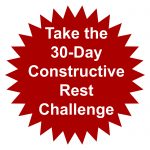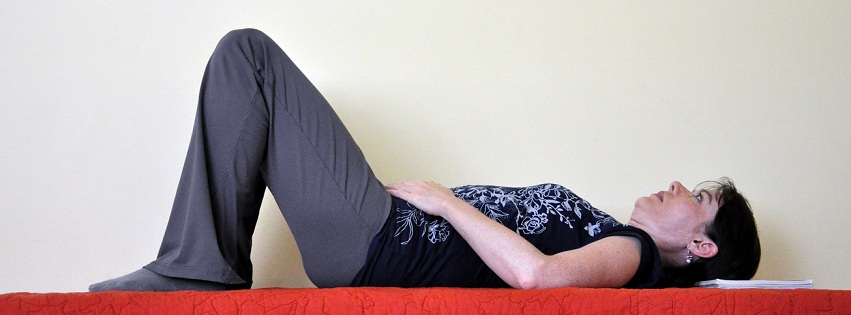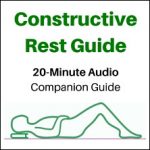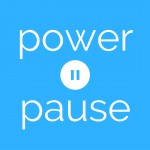 Constructive Rest is a simple, yet powerful self-care practice to energize and restore body and mind. It helps you to improve your posture, release tension and calm your nervous system so you can be your most efficient, energetic and productive self. All you need are a few minutes of time, a couple of books, and a quiet place to lie down.
Constructive Rest is a simple, yet powerful self-care practice to energize and restore body and mind. It helps you to improve your posture, release tension and calm your nervous system so you can be your most efficient, energetic and productive self. All you need are a few minutes of time, a couple of books, and a quiet place to lie down.
Constructive Rest is a simple procedure that has many benefits when practiced regularly for most people, whether or not they have experience with the Alexander Technique.
A regular Constructive Rest practice is the most beneficial. I have free tools to help you try it for 30 days, and feel the benefits in your life. Click here for details.

NEW!
Monthly Guided Constructive Rest Sessions for Stress Relief
 Join me for half an hour just for you – relieve stress, release excess tension, and calm your nervous system with Constructive Rest.
Join me for half an hour just for you – relieve stress, release excess tension, and calm your nervous system with Constructive Rest.
The online sessions take place during the last week of each month on Zoom, and I’ve alternated days and times to help people in different time zones and with different schedules be able to attend live. Recordings are also provided to all who register. No prior experience necessary!
In each session you will:
- Experience a unique 15-20 minute guided Constructive Rest talk designed to help you release excess tension and calm your nervous system so you can become more present, connected and at ease in yourself.
- Learn how to set yourself up in Constructive Rest for optimal benefit.
- Discover adjustments and alternatives to the classic Constructive Rest position to find what’s just right for you.
- Get the opportunity for direct feedback. In fact, I’ll hang around for an extra 15 minutes after each session as needed to answer your questions.
- Enjoy time just for YOU!
Each registered participant will also receive:
- The recording of the session, so you can use and enjoy as much as you want afterwards.
Suggested Session Cost: $10-$30
Please pay what you can.
Get more information, dates of the next sessions and register here >>
Constructive Rest Audio Guide
 My Constructive Rest Audio Guide is ideal for both beginners and people who already practice Constructive Rest. The audio is a little under 20 minutes long (18:21), which is considered the optimal amount of time lying down to gain the most benefit and allow your spine to regain its full height.
My Constructive Rest Audio Guide is ideal for both beginners and people who already practice Constructive Rest. The audio is a little under 20 minutes long (18:21), which is considered the optimal amount of time lying down to gain the most benefit and allow your spine to regain its full height.
In the Constructive Rest Audio I gently guide you to release excess tension, using my latest ideas on how to direct your thinking and awareness most effectively.
Accompanying the audio is a 18-page companion guide containing all you need to get you started, as well as additional tips and suggestions for alternative positions.
When you purchase the Constructive Rest Audio Guide you will be sent a link to download both the audio (MP3) and the written guide (PDF).
Cost: $9.95
Click here to purchase now.
Power Pause Audio

My Power Pause audio is under five minutes long (4:36) and can be used to accompany lying down in the traditional Constructive Rest position, as well as sitting at your desk (just pop in your headphones and listen), standing, or whatever suits you.
Don’t have time for self care? Don’t have time for Constructive Rest?
With a “power pause,” self care does not have to take long. You do have time.
Just a few minutes can be hugely beneficial, especially if you’re paying attention in a mindful and constructive way. In the audio I gently guide your attention and thinking to help you be more present and connected, release excess tension, and clear your mind of mental clutter.
When you purchase the Power Pause audio, you will be sent a link to download the MP3 to enjoy any time you want.
Cost: $3.50
Click here to purchase now.
Constructive Rest Tips and Info
Below find information and tips on how and why to practice lying down in Constructive Rest.
To get personalized instruction and experience with Constructive Rest, book a session with me.
What is the Constructive Rest?
Constructive Rest is a way of lying down in a semi-supine position (on the back with the knees bent, and feet flat on the floor) that promotes good spinal alignment and release of excess tension. It is also known as “Active Rest,” “Semi-Supine” or simply an “Alexander Lie Down.”
Why do it?
Lying down in Constructive Rest is one of the quickest and simplest ways to restore our natural shape, and can be invaluable for people suffering from neck or back pain. By taking the time to lie down for just a few minutes once or twice a day you will:
- allow muscles and joints to release excess tension.
- take pressure off the spine, allowing displaced spinal fluid to be reabsorbed, easing compression and giving you back your full height.
- become calmer as you take time away from the stresses of the day.
- allow your breathing to become more regular.
- give your digestive system time to release.
- regain energy and ease for life in the upright.
When should I lie down?
At least once every day! Although any time of day is helpful as suits your schedule, the best time for most people is early afternoon, so as to give your body a chance to restore itself before the second half of the day begins. It can also be valuable to make time to lie in the balanced resting state before and/or after participating in any strenuous or stressful activity (such as giving a presentation or doing some gardening).
How long should I lie down?
Lying down for 10 to 20 minutes will be most beneficial at least once or twice a day. If, however, five minutes is all you can do, the benefits will still be valuable.
How do I lie down in Constructive Rest?
- First find a quiet, warm, carpeted floor space where you can lie down undisturbed.
- Place a small pile of books under your head for support – this should be high enough to stop your head pulling back, but not so high that your chin is pushed toward your chest, constricting your throat.
- Bend your knees so they point up toward the ceiling, with your feet flat on the floor about shoulder-width apart.
- Let your hands rest on your abdomen, fingers released and elbows out to the side, allowing width in your upper body.
- Aim to be almost completely passive physically.
- During your lie down be aware of the ground supporting your back, allowing your shoulders to rest as your back widens and your whole body lengthens and expands.
- As you move back into your daily activities, notice your body’s regained ease and expansion.
Tips
- If your head feels uncomfortable on the book/s, make the top softer with a wad of tissues or a folded scarf.
- Let your eyes remain open, at least for some of your time lying down, so this can be a time for building greater awareness of your body and surroundings.
- If you start to feel drowsy (aim to have at least a few minutes of awareness with your eyes open), turn your toes inward and let your knees fall together so the legs don’t flop.
- If your lower back is painful, it can be particularly helpful to support the lower legs on a low piece of furniture or rest the knees over a pillow. This way the legs can rest completely and allow the lower back to relax.
- If you are uncomfortable with your hands resting on your abdomen, you can either let them rest by your side, elbows slightly bent and palms down, or you can extend your arms out to the side almost level with your shoulders, palms facing upward.
- To help you get the most out of your lie down, listen to Imogen’s guided talk-through as you’re doing it.
What People Say About Constructive Rest
“I have been using your constructive rest audio from your website. I have stomach acid problems from time to time and I’m trying to get away from using too many antacids. The constructive rest has helped ease the symptoms without having to leave work. Usually when it gets bad I go home and lay down or have some Sleepytime tea and lay down. I did the constructive rest twice one day at work and it helped a lot.”
—Marilyn Brill, Administrative Assistant
“I have found the constructive rest a great tool to deal with anxiety, tension and stress.”
—Roslyn Franklin, Participant in the Constructive Rest Challenge, Australia
“Alexander Technique Constructive Rest is a simple, yet powerful, way of releasing harmful tension which you can do almost anywhere. It also helps you re-calibrate your self-measurement of “zero” excess tension and is a wonderful platform to exploring such things as Alexander directions, simple activities like moving an arm or leg, breathing, speaking, singing – and much more. I do it regularly myself and I strongly recommend it to students.”
—Robert Rickover, Alexander Technique Teacher
“[Constructive Rest] practices…have given me a new tool to cope
with stress and the physical toll it takes on my body.”
—Lily M., Actor
“Constructive Rest is a lifesaver for me, providing a way to stop and refresh, reset and calm myself during the day – like an “awake power nap”, only better. Constructive Rest is especially beneficial during times of extra stress or a deadline, helping me to clear my head and shed fatigue.”
—Becca Ferguson, MindfulAT.com
More information
I have written more about Alexander Technique Constructive Rest in my blog:
- Stress Reliever: The Alexander Technique Practice of Lying Down
- Lying Down for Back Pain Relief
- The “Restorative Niche” and Constructive Rest
- Keep Calm with Constructive Rest!
- It’s Summer – the Perfect Time to Relax and Restore
- Alexander Technique Constructive Rest as a Daily Practice
- Why Lying Down on the Job is Good for Business…and your Back
- Can You Nap Constructively?
I was also interviewed on BodyLearning, The Alexander Technique Podcast, about the usefulness of this easy self-help procedure. Click here to listen.
You can also find many more resources about “Constructive Rest” at www.alexandertechnique.com/constructiverest.
